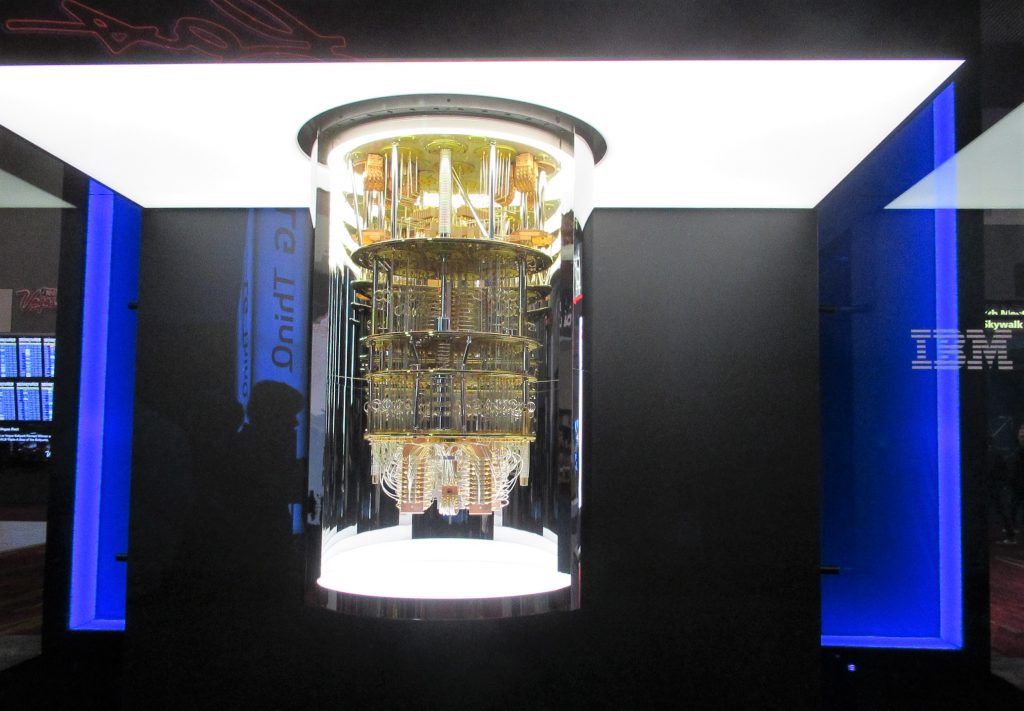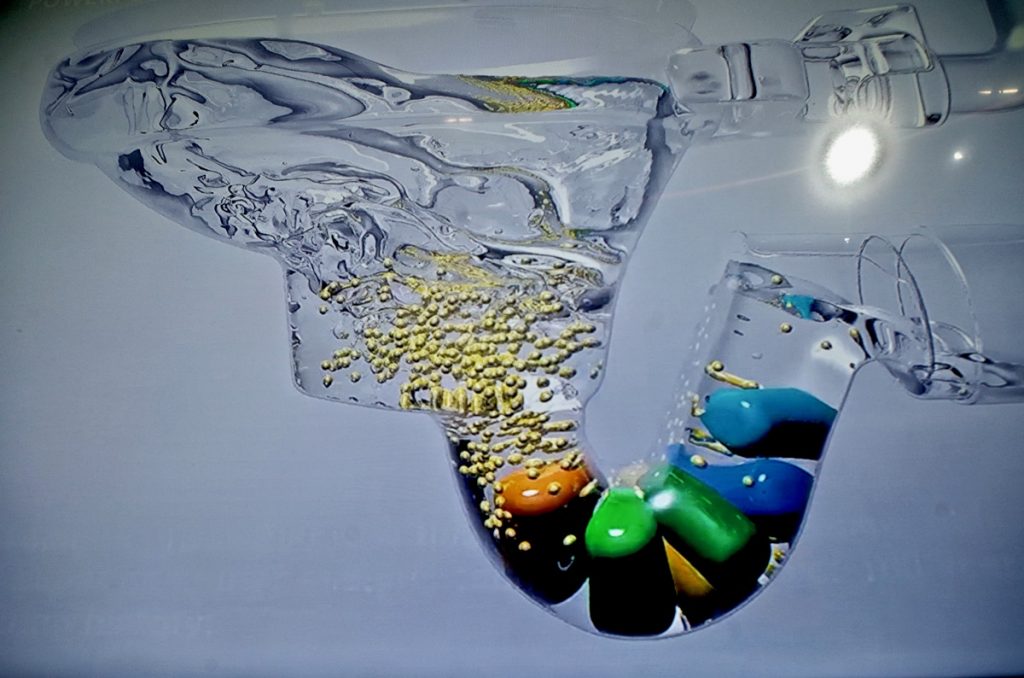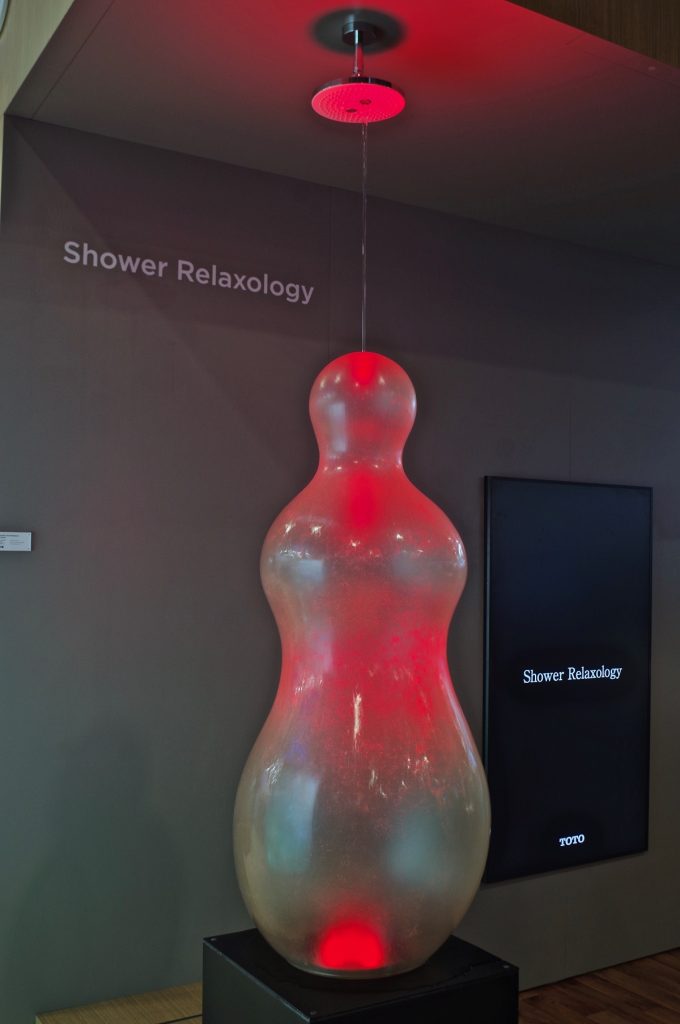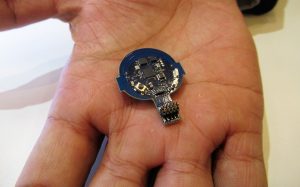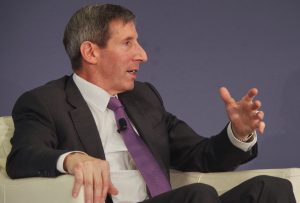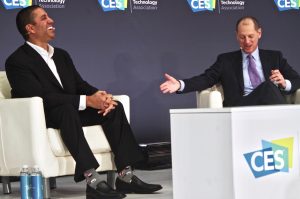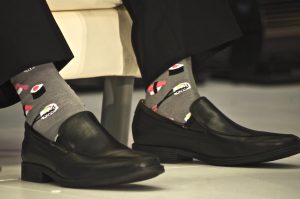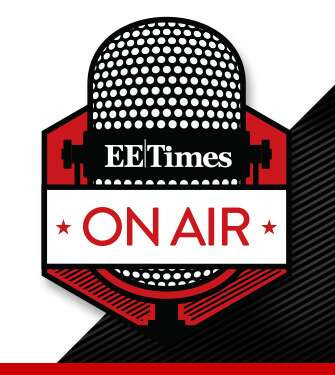BRIAN SANTO: I’m Brian Santo, EE Times Editor in Chief, and you’re listening to EE Times on Air. This is your Briefing for the week ending January 24th.
In this episode…
During its first few decades, AMD acted like Intel’s kid brother, tagging along and mimicking whatever Intel did. Recently, however, the company has established a reputation for independent innovation. This week we’ve got an interview with AMD CTO Mark Papermaster, one of the architects of the bold new AMD…
…also – a conversation with Ron Black, the CEO of Imagination Technologies, which seems to have its fingers in nearly every emerging technological trend out there…
…and our editorial director, Bolaji Ojo, checks in with the key question for the electronics industry in 2020: Where should everyone spend their money?
AMD was among the early wave of semiconductor companies born in late ‘60s and early ‘70s, many founded by former employees of Fairchild Semiconductor. Other companies from that era – National Semiconductor, LSI Logic, Mostek – are gone (as is Fairchild itself), but AMD has been remarkably resilient across the decades.
Over the years, AMD has mostly prospered, largely by offering itself as an alternative to Intel. But compared to Intel, AMD’s corporate strategies and management never appeared quite as steady. In 2006, AMD bought into the graphics processing segment of the market with the acquisition of ATI. In the summer of 2014, the company reorganized into two business groups: one was Computing, the other was Graphics. At roughly the same time, AMD hired Lisa Su as CEO. She encouraged the company to be far more ambitious. And just as AMD began delivering on those ambitions, Intel appeared to start stumbling.
At the Consumer Electronics Show a couple of weeks ago, Intel offered some details about previously announced next-generation products, but was vague about when they’ll all hit the market. In contrast, AMD introduced a slate of bold new products, most of them with specific launch dates. They included the Ryzen 4000 mobile CPU, the Threadripper 3990X high-end desktop chip (or HEDT) and the Radeon RX 5600 XT graphics card.
Mark Papermaster is AMD’s chief technology officer. He’s been helping to guide AMD’s technological roadmap for years. International correspondent Nitin Dahad caught up with Papermaster shortly after AMD’s presentation at CES. Nitin asked him about AMD’s new products.
MARK D. PAPERMASTER: It’s really an exciting time in the industry because what you’re seeing is a confluence of where we’re all being really in overload mode of the kind of the data that we’re being bombarded with every day. You know, you have IoT devices literally everywhere. It used to be that we had the big change of all being connected with cell phones, but now all the devices around us are smart, and they’re generating a ton of data. And in industrial applications as well. We put sensors on, and are creating really an inexorable demand for more and more high-performance computing. So that’s what we’re focused on in AMD.
That trend in the industry has driven us to put a roadmap together of a family of CPUs around our Zen, our family of GPUs, around our Radeon DNA architecture, and we’re rolling our extensions of our Navi product line. And it’s focused on really keeping AMD on or ahead of a Moore’s Law pace of doubling performance at a given cost point every 18 to 24 months, even while the traditional factors that helped Moore’s Law with new foundry technology nodes are changing. We don’t get all the same benefit we used to with those technology nodes.
So that’s why it’s so exciting for us. It’s driving innovation. It’s driving us to take new approaches like chiplets, putting different components in different technologies and assembling systems across a chiplet approach like we did on our new second-generation server like you saw, in fact, on the 64 core Threadripper that we just announced this week. That’s what excites the engineers at AMD. How to bring innovation to deliver enhanced experience and computing capabilities for our customers.
NITIN DAHAD: Your CEO, Lisa, talked about the gains in the processor, being both from the 7 nanometer process, but also design architecture improvements. Are you able to say anything about that?
MARK D. PAPERMASTER: Yeah. Going forward, it is so important to, obviously, reap the benefit of each new technology node. And that gives us a density at each new node. So you saw in our Ryzen 4000 we were able to pack in eight second-generation Zen cores, eight graphic compute units, and optimize it and bring it all the way down to a 15 watt, ultrathin laptop form factor. So it is about marrying the architectures, the CPU and GPU architectures, with the process technology. But equally, it’s about that whole system optimization. So we work closely with OEMs, delivering the right form factors. And then, of course, the software stack. They can deliver the end experience.
NITIN DAHAD: Is there room for new architectures do you think as you go forward?
MARK D. PAPERMASTER: Nitin, that’s a great question. With this just huge demand for more computing, what you’ll see is no abatement in the need for traditional CPUs and GPUs. You have all of the coding standards and the legacy of code that will demand more and more compute capability and emerging applications that can leverage that economy of scale of our X86 CPUs and of our GPUs. Yet we are seeing our workloads that can benefit from specialized architectures. And so what we’re doing at AMD is making sure that we can easily attach to startups and new architectures that are coming out there. For instance, to accelerate AI workloads that work in tandem with traditional computing architectures.
NITIN DAHAD: And when you say “new startups,” you’re taking about starts using the alternative architectures as well?
MARK D. PAPERMASTER: Sure. First of all, you have programmable devices like FPGAs that allow people to really experiment and try new approaches and new architectures. And then as those prove out, they’re often hardened into an application-specific IC. And so we would like to see a robust innovation ecosystem that can create these type of accelerator devices with our CPU and GPU products.
NITIN DAHAD: And does that mean like X86, ARM and RISC-V sitting together?
MARK D. PAPERMASTER: You have that today. You look at our security processor that we have across our chips. We partner with ARM. We leverage ARM trust zone. And we have many microcontrollers on our devices, so you actually already have a robust mixed architecture approach in devices today.
NITIN DAHAD: I’m going to ask you a question. Probably don’t expect an answer, but what can we see more of from AMD this year?
MARK D. PAPERMASTER: What you’re going to see is very exciting. We started a rollout last year of our 7 nanometer across our portfolio. We’re so excited this year to continue that. It starts with the Ryzen 4000, and extending our Navi product line. And you’ll see us really complete that portfolio top to bottom at the close of ’20. And we’re right on track on our next generation. So we’ve been very public on our Zen roadmap, and we’ve said that here we are shipping Zen 2 today, and our Zen 3 is right on track. And likewise on our graphics roadmap. We’re incredibly focused on our execution and getting each generation out to the market exactly when we promised it.
NITIN DAHAD: Mark, thank you very much.
MARK D. PAPERMASTER: Thank, Nitin.
BRIAN SANTO: AMD certainly impressed people with the products it announced this month. Some reviewers went hyperbolic, using terms like “monstrous,” “insane” and “stupid fast” to praise the new processors. Moving forward, EE Times will stay on top of how AMD’s competitors – especially Intel – try to respond.
Imagination Technologies got an immense boost years ago when it became a key supplier of electronic components for Apple’s iPhone. Imagination took a commensurate hit in 2017 when Apple said it was going to wean itself from Imagination’s products over the ensuing two years. Well, those two years have elapsed, and then a funny thing happened: Apple came back and renewed the relationship at the beginning of January. The press release lacked details, however.
Nitin Dahad caught up with Imagination’s CEO Ron Black, and asked about the resumption of the relationship and how it happened. This was Black’s response:
RON BLACK: We said everything we could say in the press release.
DAVID HAROLD: Yeah, Siri is always listening. You know that, right? We can’t add any color.
BRIAN SANTO: That second voice you just heard belongs to David Harold, Imagination’s VP of marketing. Since it was clear that Apple had closed that conversational avenue, Nitin shifted gears, asking Black about the rest of Imagination’s business. The response was an interesting overview of many of the other major technology trends are developing today.
RON BLACK: I’m particularly excited about the automotive industry and the advanced things that they’re doing. We have an outstanding position in automotive, and we’re looking to expand that. I think there’s a very interesting thing in those driving pixels, but also the autonomous driving and ADAS functionalities. So it’s just making the car safer. And that’s the type of thing that we really like to do. Technology that benefits humanity. Makes a difference in people’s lives. And the automotive industry is going that.
Now, we had a tough year last year. There was a lot of redundancies announced, but we’re quite confident it’s going to rebound back and it’s going to be a great opportunity for Imagination.
Besides automotive, we’re very interested, especially with the A Class GPUs, in looking towards the edge and data centers. The edge in a 5G context, we think that can change the computing paradigms, because you had high-bandwidth, low-latency everyplace. So some of the functionality that you think about doing today only in the data center or only in a mobile device, you can partition.
One of those is ray tracing. We have an outstanding position in ray tracing. We’ve been doing it for a decade or so. But we were early, we were too early. We actually had it on hold a little bit a few years ago, but we’ve been bringing it back over the last couple of years. We’ve opened it up for architectural licenses, so any GPU. We’re willing to license to anybody. I think it’s a great thing to take a license, because we have an incredible patent portfolio. That’s another area I’m investing in heavily, is patents. (Or “pay-tents,” as the British say.) So ray tracing is interesting.
It’s not just ray tracing for gaming. It’s ray tracing like in automotive. The automotive vendors are really interested in ray tracing, because as you render the cars on the screen, that’s their brand. That’s associated with how they look at things.
So those are kind of the major vectors. We have a smaller initiative today in RISC-V. We’re replacing all of our MIPS and meta cores, smaller microcontrollers that are in the GPUs. But I’m really interested in this space. Customers have been asking us to look at doing higher-end parts, so that’s an area we’re investigating. Watch that space.
NITIN DAHAD: I’ve seen a couple of different answers from you and a couple of other players, which I’ve written about last year behind the RISC-V ecosystems. So I’m guessing, if you’re going towards the edge and you need to do a lot of that stuff, the legacy stuff, is that too heavy in terms of the silicon state and things like that?
RON BLACK: I think RISC-V is modern architecture and the ecosystem is just gaining a lot of momentum over the last three to four years. I’ve been looking at it closely for five years. Five years ago, I thought it was a little soon. Today, I think there’s just so much momentum behind it. And customers are very interested in looking at different aspects of it. All the way up into very high-end application processors.
DAVID HAROLD: I think it’s safe to say that the firmware-type processors that were in our earlier GPUs were pretty simple. But actually now we have automotive-grade products, and the requirements in automotive in areas like self-test and some of the security are more advanced, and you need a bit more processing in there. RISC-V really sort of fits the bill for that.
RON BLACK: Yeah. One of the things, Nitin, that you’re probably going to see the industry talk about a lot more, and certainly us, is secure, heterogeneous computing. Secure all the way down from the device. It’s a hardware route of trust. All the way up to the network, to the cloud, to the applications. And binding applications to specific devices. So that’s a big area of focus for us. And heterogeneous in the sense of CPU, GPU and then various accelerators, many for AI applications. We have a very powerful neuronetwork accelerator that’s gaining a lot of traction.
And interestingly, first I thought it was going to be mainly a hardware play, but it’s the software. The software’s incredibly complex. The ecosystems are still developing. And when customers come to us, it’s usually because they love the fact that we have an API that transcends the GPUs and the neuronetwork accelerator. So you have an algorithm that’s evolving, you can run some of it on the GPU. If it’s not evolving, you can really focus in on the neuronetwork accelerator, get an absolutely dominant PPA.
NITIN DAHAD: I think what I’ve heard from you now is automotive is a big play for you. One doesn’t normally associate the traditional graphics pedigree that you’ve come from, and with automotive now it’s becoming clear.
DAVID HAROLD: You know what a phone and a car have as a similarity? It’s the heat. In a mobile phone, you don’t want something burning through your pocket. In the car, you can’t have hot spots. You can’t have risk of failure caused by heat, you can’t have a risk of fire caused by heat. So actually a car manufacturer is very interested in a lot of the same things that have made us so successful in mobile.
RON BLACK: I would say that most of the cars are moving away from the clusters with the normal dials, and they’re moving toward screens. And you look at some of the advanced cars. They have screens everyplace. Consoles, clusters, just the entire car. And so you are driving a lot of pixels in the cars. And then the functionality of course gets used for all the way up through autonomous driving-type functionality.
DAVID HAROLD: This isn’t a niche thing at all. We have the top three cars selling today use our technology.
NITIN DAHAD: I saw an amazing display yesterday. Three screens on a car. And pretty high-performance graphics. And that was being driven by one system, on module.
DAVID HAROLD: It is. So we have this thing called “hyperlane” in the A Series, which basically lets you drive multiple displays. It treats your GPU as if it’s multiple GPUs. Up to eight, in fact. Which is basically us saying to car manufacturers, “How many screens do you need?” And they go, “Four.” We’re like, “Okay, we’d better double that.” So we have that ability to drive multiple displays, and I think that’s going actually get more and more prevalent in a car. Some of the manufacturers we’re talking to think they’re going to put 400% more electronics into their cars over the next few years. It’s a massive growth opportunity.
NITIN DAHAD: I quite liked the hyperlane when I rode in it. It’s sort of like the parallel processing gone crazy.
DAVID HAROLD: The heart of that isn’t the ability to have multiple workloads. It’s the ability to guarantee quality of service. So in the car, there are certain things that always have to work. So your speedo. If that isn’t telling you the correct speed, you have a serious problem. So you need to guarantee that workload will always be fulfilled.
But then something else, maybe as a lower priority, and it can once in a while drop its frame rate, so whatever else the demands are different in the system. And our ability to guarantee and to partition that is really what hyperlaning is all about.
NITIN DAHAD: Automotive is a big thing, but connectivity is also a big thing. You touched on the opportunity in 5G with the edge processing. Maybe ray tracing at the edge. So tell me a little bit about the vision for connectivity this coming year.
RON BLACK: We changed the strategy when I joined the company. They had previously wanted to divest the Insigma product line. I didn’t think that was the right idea. There was a lot of premier accounts that are in interested in it. And connected microcontrollers are now all in vogue. And clearly we’re focused on a very specific set of applications. That’s mostly around power-efficient WiFi and Bluetooth low energy. We’re not trying to do kind of mobile device things. It’s really about the broader market and IoT connectivity. We’ve narrowed the focus of the team, and the customers are just responding incredibly well. There’s lot of innovation people looking at us. And that’s probably the biggest theme about Imagination. I’ve known the company for many, many years, but I didn’t really appreciate how innovative it is.
And there’s so much innovation. We just created IMG Labs. So it’s a labs function whose focus… Today, a lot of it is on ray tracing, extensions of ray tracing. But there’s a security thrust, there’s the heterogeneous computing thrust. We’re really looking to hire all of these big brained PhD types to compliment all of the staff that we have. So it’s about innovation. And in many ways, which is nice about it, it’s fun and socially responsible innovation. Because the product sets that we have… Think gaming. It’s fun. But then we can use the same GPUs to make the cars smarter so that they avoid collisions. So it’s socially responsible. That combination is truly unique.
NITIN DAHAD: In terms of business, is it still very much still third-third-third US-Europe-Asia? Or are you sort of like steering towards Asia now because of a lot of what’s happening?
RON BLACK: Asia’s actually a smaller part. It’s the US is still the largest, then Europe, then Asia. China, in general, is a very interesting area for everybody, just because of the investment that they’re putting into it. And when you’re building all these fabs and all sorts of semiconductor companies that are popping up, you need IP. And most of the time things like GPUs are just so hard. We have upwards of a thousand people working on these things. It just doesn’t make sense for every company to do. It makes sense for companies to license it.
So we see China as a very big area. We’re investing heavily in China to grow, both in an R&D standpoint and commercial customer support across all of the product lines.
NITIN DAHAD: I know ARM and SciFive, they’ve both set up different trading entities now in China. Have you done that?
RON BLACK: We’ve always just had a China headquarters there. So it’s not a separate entity. I don’t really think that that’s the appropriate way to set it up. In fact, several customers have told us they prefer it not to be that way. Because you don’t want to have two independent companies trying to accomplish the same thing. You really want to bring the full bulk of the company. We are very independent on management style. We push from decision making down. There’s more autonomous. We agree on the objectives, and then everybody executes ruthlessly in that direction. So there’s a lot of autonomy in the regions, but we really put the whole company behind it.
NITIN DAHAD: Okay, lastly. New decade. Everybody’s made lots of predictions. What’s your vision of the coming decade? And then maybe you can relate it back to Imagination if you like as well.
RON BLACK: I hate the kind of “vision” type of statements. I always found that CEOs that pontificate about vision or get their faces on magazines, you should probably short those companies, because they are spending too much time. Our focus is more on ruthless execution around where we have demonstrable value to customers. So it’s a lot of customer focus, listening to the customers, and then just ruthlessly executing. I think we’re proving that we’re doing that. So that’s really exciting.
I think clearly, as Dennard Scaling and Moore’s Law falls off, there’s going to be a change. Five nanometers A6 will cost half a billion dollars. There’s not a lot of companies can do that. So I think chiplets is the way to go. I’ve been working in chiplets in one way, form or another for six years, when I believed that it was the time to go. We have internal designs that we’re undertaking now in a chiplet context. So I think that’s going to be a major trend.
You know, the other part that I think is super important (I’m not ready to announce anything yet.), but you’re going to see us do a lot more in software. It’s a very natural thing when you thing about our customers are semiconductor companies, but a lot of times they ask them to work with them, say in the automotive space, to help the car manufacturers tailor their ECUs to leverage our GPUs. So that’s a very natural extension, is to offer tools and technical support to the customer’s customers. And that naturally evolves into software businesses.
NITIN DAHAD: Interesting. I’ve heard this quite a lot. Chiplets. I think that’s a very sort of… I just interviewed another CTO yesterday who was talking about the heterogeneous architectures that we’re going to see a lot more of, especially with the data center as well as the edge.
RON BLACK: Absolutely. We see that across the board.
NITIN DAHAD: Well, Ron, thank you very much.
BRIAN SANTO: You just heard Ron Black say that Imagination is going to replace all of its MIPS IP with RISC-V cores. What does that mean, exactly?
Recall that Imagination Technologies acquired MIPS in 2013. Imagination’s big ambition then was to become an IP power house – similar to Arm – having both graphics and CPU cores under one roof. But that dream never came true, and only four years after acquiring MIPS, Imagination turned around and sold it to Tallwood Venture Capital.
In 2018, Wave Computing bought MIPS from Tallwood, with a plan for MIPS to go open-source. Wave itself went under last fall.
Black was referring to “MIPS cores used as firmware processors in PowerVR GPU designs.” So Imagination will be replacing those with RISC-V cores developed by Imagination in house.”
Earlier in the podcast, we mentioned a handful of the once-mighty semiconductor companies that disappeared over the years. Black’s comment to Nitin means that another famous name in semiconductors – MIPS Technologies – is about to join those others on the wayside.
Earlier this week, our colleague Bolaji Ojo was named publisher and editor-in-chief of Aspencore. Aspencore is the global publishing company that owns EE Times. Bola is a veteran journalist who has covered the electronics industry for so long he won’t tell us precisely how long it’s been. Every once in a while, he comes and visits us here at our luxurious studios at EE Times Central, and every time he visits, he’s got some big ideas to unload. Here we are with International editor Junko Yoshida.
JUNKO YOSHIDA: Bola, what’s on your mind?
BOLAJI OJO: Well today, Junko, first I’d like to kind of celebrate Aspencore. I think probably that’s the first thing on my mind. You were at CES with Brian and with David Benjamin and Nitin Dahad and a whole host of teams from Aspencore. We were probably one of the largest technology media teams at that event. To kudos to the team! You guys really rock! You did a great and a fantastic job out there.
Now: In the spirit of “What have you done for me today?”, I can tell you that what’s on mind next as your co-conspirator Editor-in-Chief, is where I’m sending my reporters next. So, Junko, you are off to Barcelona to attend the Mobile World Congress. Brian is going to be holding down the fort back home in the West Coast of the US. Nitin Dahad is going to be at the Embedded World Congress with Sally Ward-Foxton. Mauricio Depaulo Emilio, our famous Italian engineer, is also going to be at the Embedded World event in Germany. So we are fanning out across the globe. And the reason we’re fanning out across the globe is that we need to know what’s happening, we need to represent our readers and we need to tell them all about the new things that are going on the world of technology.
Now, in order for us to do that, though, we should go back in time. All right? Brian, I’ve got a question for you. How many decades now can you count that semiconductors, if you can just kind of approximate the timing when the semiconductor industry could be said to have caramelized. How many decades now?
BRIAN SANTO: Now, my initial answer was six decades, going back to the early 70s with AMD and Intel. But you’re already told me that I’m wrong about that.
BOLAJI OJO: And the person who corrected me: Malcolm Penn, the CEO of Future Horizons, which is a research firm based in the UK. So I was in London last week attending that event, and Malcolm, he’s not in his 80s yet, but he has seen several decades of this industry, and he’s somebody worth listening to.
So one of the questions that he asked at that event had to do with what is driving the semiconductor industry today. So that’s part of what’s on my mind. And rather than I give you his answer, I’d like to ask Junko. Junko, what do you think is driving the semiconductor market today?
JUNKO YOSHIDA: You know, I think it’s new devices and new applications that are enabled by new devices. Brian said five, six decades ago. We didn’t even have a smartphone. Think about that. All the electronics that go into that little device, we didn’t even think that PC was going to be that big 60 years ago, right? So I think those are the new generation of devices and the applications that those devices enable.
BOLAJI OJO: Apps. Apps, apps, apps. Apps are the ones driving the semiconductor market today. You nailed it, Junko! Of course I expected you to do that. You nailed it! And the reason why it’s different today: This is not your old market from the 1970s or the 80s driven by the PCs or smartphones. It’s the apps. And the reason why… Malcolm’s conclusion was that the semiconductor market is more and more driven by the global economy nowadays. And the reason for that are the apps. Those apps are the ones that have now cut across all segments of the economy.
On your app, you can book a flight. You can buy insurance. You can buy a car. You can have Amazon ship you anything anywhere that you want. There’s a lot more that we do on these apps. They’ve basically cut a line right through the economy.
So now the question for me: When you said, “What’s on your mind?”, data. That’s what’s on my mind. Because they are generated by all of these apps. And the problem… There are humongous problems arising from the usage of data. One of the things that Malcolm said, Malcolm Penn said at this event, he said, and I thought that was kind of interesting, and it kind of sets the tone for what we’re going have to deal with as an industry in the future. He said, and I’m quoting, “It is unrealistic to expect data to be perfect. If data is not perfect, we’ve got a problem on our hands.”
So what is the reasoning? Why is data not perfect? And what happens when data isn’t perfect? Are we being realistic in looking for perfect data? Junko, you write about automotive all the time.
JUNKO YOSHIDA: What do you mean by data not being perfect? Do you mean data not being perfectly captured? Or data has a lot of noise? What do you mean by that?
BOLAJI OJO: All of that. It’s not perfectly captured. So even the sensors. You write about autonomous vehicles all the time. The sensors. What kind of data are they getting? And has it been properly interpreted? Who’s processing it? How much of it can any device process at any point in time? How do you use it? And how do you use it across the economy? How do you use it at home? How do you use it in engineering? How do you use it in banking? How do you use it in finance? How do you use it at all? If it is not perfect? If you cannot be sure that the data you’ve collected can be relied up, do we know if it can be relied upon?
BRIAN SANTO: It’s the old garbage in/garbage out conundrum. That’s been around for a long, long time. And just by virtue of the fact that we’re relying on even more data and collecting more data, the danger of having garbage in or garbage out, either way, I imagine that compounds the problem, right?
JUNKO YOSHIDA: Yeah.
BOLAJI OJO: But we also depend on the data. So here’s the problem: So let’s suppose that from the collection point, the data is clean. So you put it in storage. And then somebody decides to go in and tamper with the data. That’s a bigger problem. Right, Junko?
JUNKO YOSHIDA: Yeah. Exactly. I think you bring an interesting point here. One is that, How do we protect data? But also, How do we, I think you mentioned, interpret? But annotation data, it’s been known in the world of AI, it’s very difficult. Right? You annotate data, somebody has to look at each data perceived by sensors and say, Oh, this is a man; this is relevant; this is not relevant. Some human has to go in to make that decision. And if that decision is not perfect, again, data is not perfect.
But one of the things that I was talking about with Brian is that when Brian and I were at CES, I was totally amazed about what a big presence Amazon Web Service had. AWS was everywhere! Amazon had it own huge booth, but AWS also had its huge booth in the automotive segment that was in the North Hall. Right? It’s right in the middle. I mean, it goes to show what I was saying: Data has become the core of the business, and whoever hosts that data on the web has enormous power now.
BOLAJI OJO: Everything that we do, everything that engineers do now, of course hardware remains important. But I believe that the core of today’s economy is, How much data can the hardware capture? And how will it be used?
So just leaving the issue of data aside for now, this is going to be a beautiful year as far as semiconductor growth is concerned. Unit shipments are going to be up. Revenue is also projected to go up. Now, there are folks that are saying 9%. Malcolm Penn is saying 10% minimum. And he’s saying it could be as high as 15 to 20 percent. Wow! That’s a good year ahead. Where should your money be if you are in the semiconductor market? Are you supposed to focus on memory? By the way, average pricing, going up. Memory is back. And when memory is back, semiconductors will get a good year. I’m certain of that.
But where is memory going? Going back into data. This is our life today.
BRIAN SANTO: Well, I think that’s where you put your money. You’ve got to spread your money. Because you’ve got to put the technology where it’s being used, and it’s being used literally everywhere. A lot of it is the smartphones, but you still need data collection points, you need data transmission points, you need all sorts of infrastructure to make sure that the data that’s running the economy, or at least there’s the underpinning of the economy, is able to collected and moved and processed. So you’ve got a lot of different points all along that chain. So when you say “memory explodes,” wonderful. But I think RF front ends and processing, the whole shebang should probably do well. It’s on an upward trajectory. If it’s this year, halleluiah. But it’s probably good for the next few years, too, I would imagine.
BOLAJI OJO: Personally, my money’s on power and energy. Because that’s the connecting wire for everything that you’ve talked about. Now, if I’m going to put my money on power, you know where I’m going to put it? In developing economies. They don’t have enough of it. It’s like the old story: Man lands in a place where they don’t wear shoes, and he’s like, “Please!” He calls headquarters and says, “Send me all the shoes you can! We need shoes here!” In developing economies, that’s where power is needed the most.
In the West, they already know how to generate power. So what is the argument? What’s the discussion? What’s the controversy in the West? In Germany, where I am today, the controversy is what type of power.
Okay, I’m going to bring my daughter in for a quick story. We were in Africa in December, and somebody said to her, “Well, everybody in Africa wants to move to the West. They want to move to Europe and America because they think the streets are paved with gold.” And this kid said to me, “Why would they want to move?” If you’re in a place where the streets are not even paved at all. You just want a paved road. Forget about it being paved with gold. You just want paved roads. Let’s start there.
It’s the same thing. If I have money to invest in power– which is going to drive data, which is the reason why we’re developing so much more of silicon and hardware in electronics– I would want to put that money into developing economies. Because that’s where they need that power to run the next set of electronics in this industry. That’s what’s on my mind.
It’s a happy mind this week, by the way, Junko. Nothing to complain about. We’re looking at some good growth ahead. I’ve got my editors spread all over the world. We’ve got a great story at Aspencore. Watch this space, Junko. Watch this space.
BRIAN SANTO: And now the moment you’ve all been waiting for: our weekly celebration of the anniversaries of great moments in electronics history.
Here’s the first time we’ve had a pair of related anniversaries. On January 22nd in 1984, a little computer company with a frivolous name bought a commercial spot during the Super Bowl. In the ad, Apple announced it would introduce its Macintosh personal computer in two days. The voiceover said the introduction would ensure that the year 1984 would NOT be like the novel “1984.” The bleak images of resigned conformity to authoritarian control were instantly interpreted the way Apple wanted them to be: as a reference to the leading personal computer maker, IBM. Apple immediately established the anti-authoritarian cred it has maintained to this day. The ad went a very long way to help the company win the loyalty of people who work in the arts, a small but well-defined community that Apple deliberately catered to.
The ad was immediately recognized for what it would turn out to be: one of the most famous ads in history. It aired on national TV just once. Now, a 30-second spot during that Super Bowl sold for $368,000, according to one source. A 30-second ad in this year’s Super Bowl, by the way, will go for $5 million.
Anybody remember who played in that Super Bowl? I’m giving you a few seconds here. Yeah, I see only a few of you in the studio audience are raising your hands. So who was it? Yeah, that’s right. The Oakland Raiders and the defending Super Bowl champions, the Washington Redskins. The Raiders won.
The director of the ad was a fellow named Ridley Scott. You might have heard of him; he’s still making successful movies.
The paired anniversary, with the anniversary of that ad? The actual introduction of the Macintosh computer two days later, on January 24th.
(BEEP SOUND EFFECT)
That was the amazingly brief startup ping from the first Mac, which came in a beige cabinet that measured roughly 14 by 10 by 11 inches. It was built around a 7.3 megahertz Motorola 68000, and it came with a 128K RAM. It wasn’t the first PC built to showcase a graphical user interface, but it was the first successful one. Or… relatively successful. It was priced at about $2,500, which made it far more expensive than many other machines – five times more expensive than a Radio Shack TRS model. It also didn’t have a lot of software.
Subsequently, Apple tried more unconventional marketing campaigns, but it kept fumbling. Its mis-steps included an ill-advised follow-up to the “1984” commercial, referred to as the “Lemmings” ad, which most potential customers found insulting. It sold well into the education and publishing markets, however, and though those were not the biggest markets for PCs to target, in terms of paving the way for the ongoing “cult of Mac,” the Macintosh was an unqualified success.
That’s your Weekly Briefing for the week ending January 24th. This podcast is Produced by Aspencore Studio. It was Engineered by Taylor Marvin and Greg McRae at Coupe Studios. The Segment Producer was Kaitie Huss.
The transcript of this podcast can be found on EETimes.com. You can find a new episode every Friday on our web site, or through any of the most popular places for podcasts. I’m Brian Santo. We’ll see you next week.




